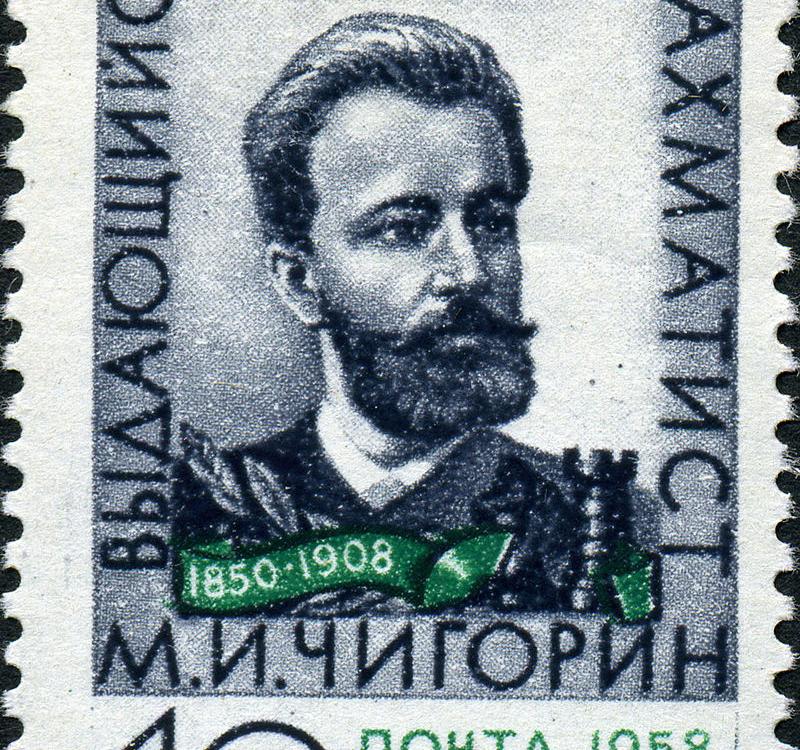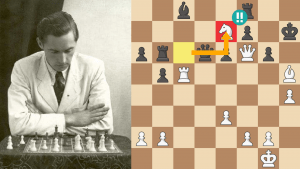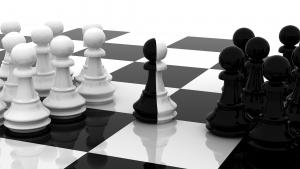
How Past Masters Can Help Your Game
I’ve gone out of my way to write articles about the importance of balance; everyone needs both tactical and positional/strategic skills (you also need endgame skills, but at the moment we will concentrate on tactics and strategy).
To add a bit of color to this article, I decided to show only games between Mikhail Chigorin and Emanuel Stepanovich Schiffers. Each had his weaknesses and strengths, and I’ll show how these weaknesses made these great players far less than they could have been.
The legendary Mikhail Chigorin (1850–1908) was the strongest Russian chess player from 1878 until his death, but the number-two player was Emanuel Stepanovich Schiffers (1850–1904), a name that many modern players don’t recognize.
Though they were born in the same year (1850), Chigorin learned how to play chess at 16 years of age, but he wasn’t serious about it until he was 24. Thus, it is understandable that Schiffers, who took up the game far earlier (he was Russian champion from 1870 to 1880), was able to give Chigorin knight odds in 1873.
This humiliation might have been the flame that pushed Chigorin into chess mania since he devoted himself to the game and rapidly got stronger and stronger.

Schiffers via Wikipedia
These two combatants played at least 100 games against each other, and after looking at all of them I have to say that, in general, they went tooth and nail (not a shock since players in those days lived to club each other over the head). What surprised me was the variety of openings: We would expect the King’s Gambit, Evans Gambit, Danish Gambit, the Scotch Opening, the Vienna Game, and a Ruy Lopez here and there (they both used these openings quite often).
However, I didn’t expect the French Defense, Sicilian (quite a few!), a form of Benoni, the Dutch Defense, the Petroff Defense, the Birds Opening, and, at the end, they even tossed out a couple 1.d4 games and one 1.e4 g6!
Of course, in most games they were throwing tactical bombs all over the place, which was typical for the times. My questions were, did they have defensive skill and, most important, could they switch to positional play if the board called for it?
PUZZLE ONE
Let’s take a look at an early Pirc Defense:
Chigorin gives us a lesson in “positional dynamism.”
Here’s the rest of the game:
Black’s superb handling of this game seems very modern.
PUZZLE TWO
White has a crushing attack thanks to his two bishops aiming at the enemy king, the d5-knight, and the white queen (which can leap into the action at any moment).
Schiffers could have won if he didn’t choose the silly 16.Rxe6. This game made me realize that Schiffers loved gambits and tactics, but he wasn’t in Chigorin’s league when it came to wading through tactical minefields. Of course, very few players were as good as Chigorin was when tactical complications hit the board.
PUZZLE THREE
White has won a pawn but Black has a lead in development, his bishop is radiating power in both directions, and the immediate threat is 11...Rb8 followed by ...Bxb2. It seems that both sides have chances here. Should White defend with 11.Qb3 or 11.c3?
What’s interesting is that 11.c3 is a POSITIONAL blunder. By creating a hole on d3, it allowed tactics (rather simple tactics) to occur. But White’s demise started with that one positional atrocity. Here we see that Chigorin, though he could play a good positional game from time to time (see puzzle one), wasn’t superior to Schiffers in that area (in fact, he was probably somewhat strategically inferior to his foe).
PUZZLE FOUR
Play the black side and find how Schiffers completely outplays his opponent with logical positional moves.
Remember: tactics flow from a strategically superior position. If you have no positional trumps and if your pieces have nowhere to go and if you have no targets to take aim at, then you are doing nothing but flailing at windmills. Schiffers won several games against Chigorin with the Benoni setup.
PUZZLE FIVE
One thing I noticed when I went through the Schiffers vs. Chigorin games is that Schiffers tended to do well in the opening but often failed when a dynamic solution was called for. Here’s a case in point:
After 10...Qh4 White has a pawn for a piece, a lead in development, and more active pieces.
As you saw, White had lots of dynamic compensation (in fact Black was in serious trouble). Swapping queens and dark-squared bishops by 11.Bxf4 makes no sense at all. It’s clear that dynamics weren't Schiffers forte (he played gambits and often tried to demonstrate his tactical chops, but he wasn’t in the same tactical league as Blackburne, Kolish, and other attacking monsters), while Chigorin sometimes floundered in positional scenarios that he wasn’t used to (the Benoni, for example).
PUZZLE SIX
If you gave Chigorin a position like this (tactical complexity), you were likely to watch as your side of the board went down in flames.
PUZZLE SEVEN
So far you’ve seen the strengths and weaknesses of both players. The following game highlights this in quite a profound manner.
Black now plays flawlessly:
In those days very few players had balanced skills. The one that stood out (in the 1890s) from the crowd was Emanuel Lasker, who could do everything at an exceptionally high level (Tarrasch and Steinitz also had balanced skills, but they still lagged behind Lasker).
It’s interesting to note that Chigorin only won a single game against Lasker in “normal” tournaments. Lasker won nine! The trick was to avoid Chigorin’s strength: very complicated tactical positions. Lasker, of course, was incredibly good at those too, which meant that he had excellent chances in a complex game vs. Chigorin, and would dominate in positional games, boring games, and endgames (Lasker was one of the finest endgame masters of all time).
Being skilled in all the game’s phases means a lot!
I should add that when they played a theme match (Lasker had to play the King’s Gambit! Big odds, since Chigorin was one of the world’s top experts in this opening!), Chigorin did well (two wins for Chigorin, one win for Lasker, and three draws).

All in all, both players (Schiffers and Chigorin) had certain strengths, but they also had weaknesses. They could play an attacking or positional game, but not at the same level (Chigorin was one of the best attackers in the world, while Schiffers was at his best in strategic situations).
Nowadays, the top players can’t be world class in one area and one or two hundred rating points weaker in another.
EVERY PLAYER, ATTACKER OR STRATEGIST, NEEDS TO BE ABLE TO DO IT ALL.
The same can be said about a player who is 1800 strength at positional play and only 1500 at tactics (or vice versa). Do your best to even these things out. By all means, play in the style that gives you the most pleasure, but in many games that style will be all wrong for some positions.
A bit of chess balance will take you to new, exciting chess vistas.






